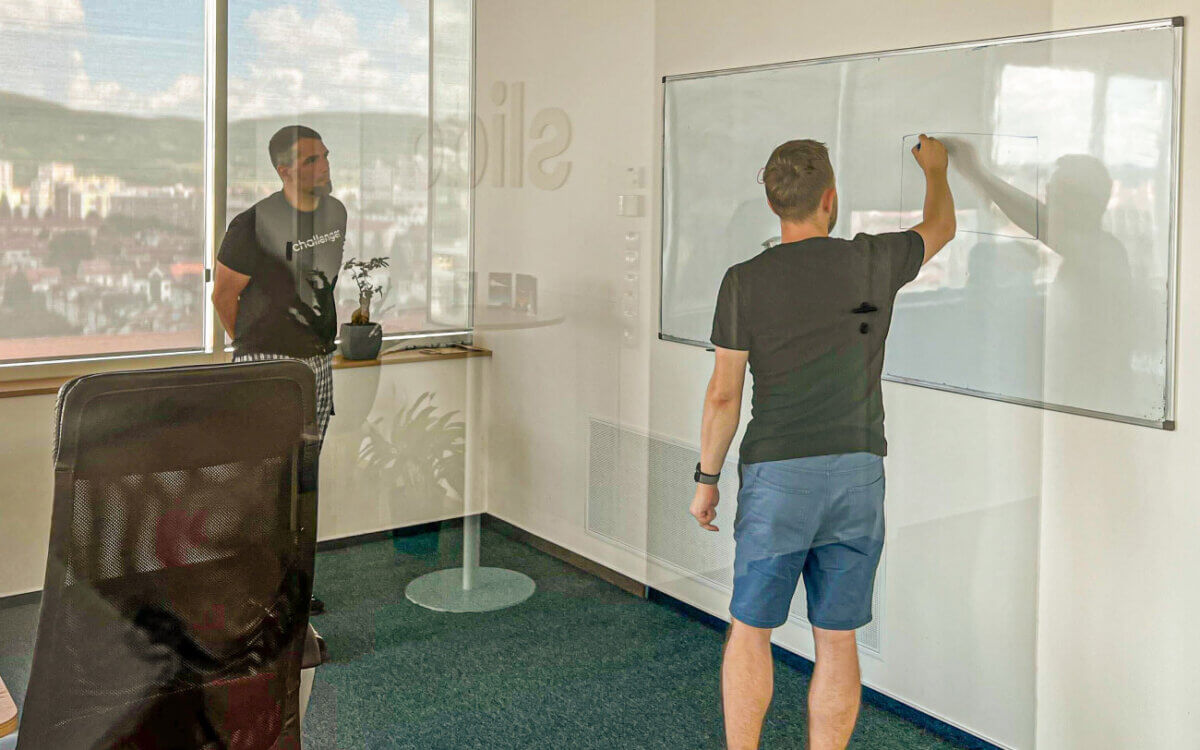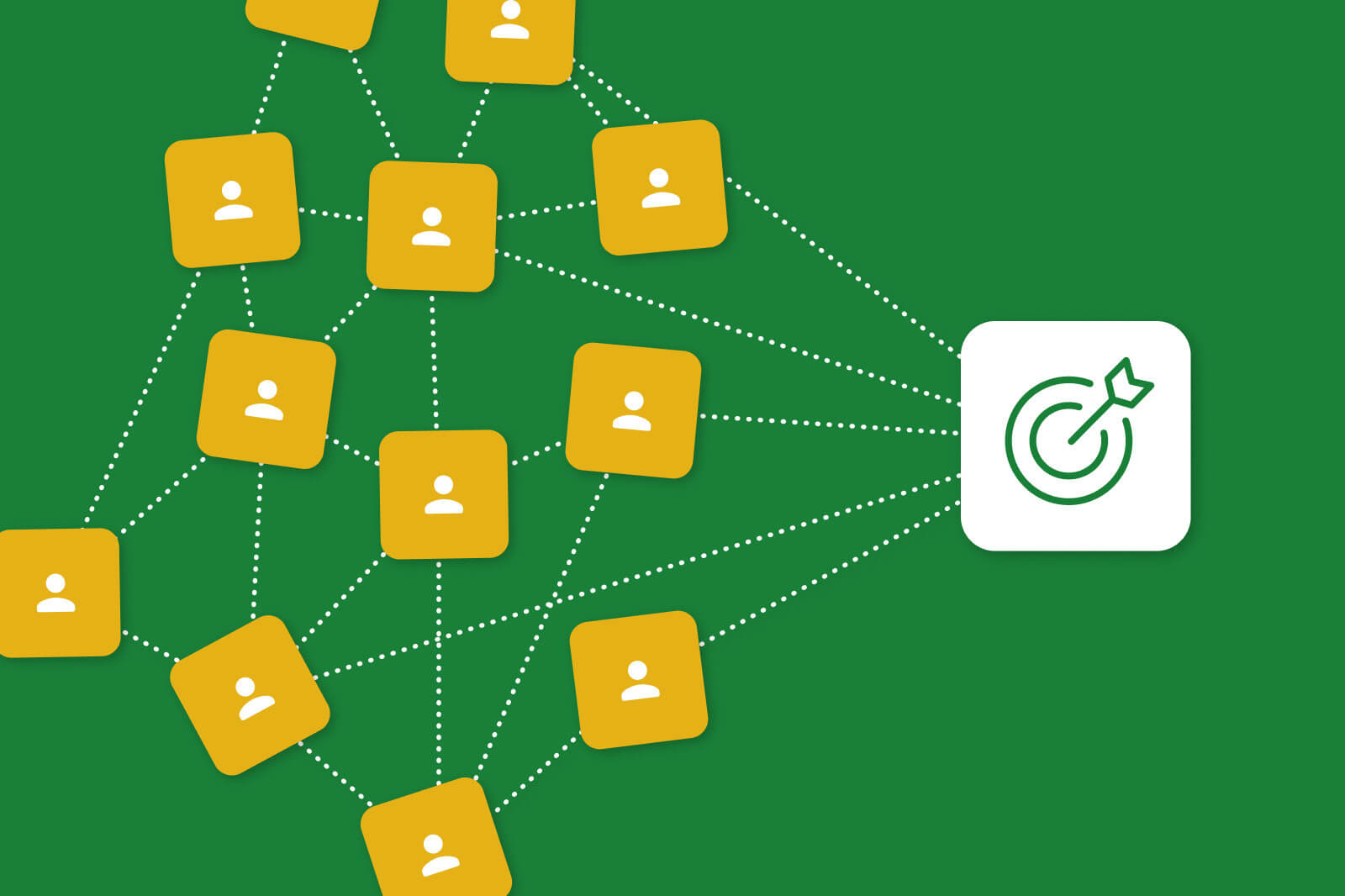Proximity bias is an unconscious tendency to favor those who are physically close to us.
Before the pandemic, proximity bias was associated with preferential treatment for people who stay back in the office long after work hours. Or those who worked over lunch.
It was all about being seen as productive. But how does proximity bias or “being visibly productive” translate into hybrid work?
Gartner states that over 39% of knowledge workers will work in a hybrid setup by the end of 2023.
While this is infinitely better than a two-hour commute, a perceived lack of visibility and belonging remains one of the key challenges facing hybrid and remote employees.
In Slack’s State of Work survey from 2023, over 27% of executives referred to relying on visibility and activity metrics to measure productivity.
On the other hand, 53% of desk workers feel pressured to respond to messages quickly, even if sent after working hours. Given the statistics, being online and available seems to be the new equivalent of proximity bias.
In this blog, we take a closer look at the science behind proximity bias and tips to recognize, support and reward employees no matter what their work setup is.
- The science behind proximity bias
- Impact of proximity bias in the hybrid workplace
- 7 tips to mitigate proximity bias in the workplace
The science behind proximity bias
The human brain is naturally wired to seek out familiarity and connection. From a physical space like the office to the familiar face of a co-worker, our brains tend to rely on what it already knows.
These mental shortcuts or unconscious biases have played a significant role in ensuring our continuance as a species.
However, when working with distributed teams who meet in the office once a week or fully remote teams, these biases may not serve us in the best possible way. Proximity bias is one of them.
Proximity bias and The SEEDS model
In a 2015 study by UCLA titled Breaking Bias Updated, neurologists use the “SEEDS” model to explain some of the unconscious biases our brains use for faster decision-making. They are:
- Similarity: People are highly motivated to feel good about themselves and to see similar others in the best possible light. This may result in viewing our own team in a more positive light while being more negative toward external teams.
- Expedience: This refers to a situation where the brain is using a fast, intuitive system and makes decisions based on what information is easily accessible and feels right.
- Experience: This bias occurs when we try to make sense of a given scenario based on “what we know”. This could be based on our current expectations, past experiences, personality and emotional state.
- Distance: We tend to assign greater value to those things that we perceive to be immediately available and closer to us. This happens because in the early periods of evolution, our survival depended on focusing on current needs.
- Safety: From an evolutionary standpoint, negative information holds more value for humans. In this sense, we’re more likely to work towards avoiding threats compared with trusting the unknown.
Though proximity bias is often described as a Distance issue or an after-effect of not being physically present in the office, it is often a combination of one or more SEEDS biases working together.

Impact of proximity bias in the hybrid workplace
Bringing us back to hybrid work, arguably one of the biggest transitions in the modern workplace, we’re presented with a unique opportunity to reexamine the way we work.
Three years in, how are we doing? Let’s look at some stats.
In 2022, Future Forum reported 29% increased productivity and 53% increased focus among employees with flexible schedules.
However, in the Microsoft Work Trend Index from 2022, Microsoft saw 85% of leaders and 49% of managers struggling to trust their employees to be productive in a hybrid setup.
Despite promising data on productivity, the established pattern of misidentifying ‘being seen’ with ‘being productive’ continues.
Only, the stakes are much higher now.
Inclusion in the hybrid workplace
Hybrid working has enabled various underrepresented groups, including women and people of color, to find a better footing in the workplace.
Here are some of the statistics that surfaced during 2022-23:
- In the IWG Women Hybrid Workers Sentiment Survey from March 2023, 88% of female hybrid workers believe that flexibility is an equalizer in the workplace, and two-thirds say it has had a positive impact on their career growth path.
- In The 2022 Everywhere Workplace Report, 71% of respondents said they would rather work from home than get a promotion.
- 88% of Asian and Asian-Americans, 83% of Black, and 81% of Latinx and Hispanic populations in the US expressed their need for flexibility in their workplace.
- 83% of working mothers now want location flexibility — an all-time high in Future Forum surveys since 2020.
- Economists at the Federal Reserve Bank of New York, the University of Iowa, and Harvard found that remote work causes young people to miss out on critical mentoring and real-time feedback opportunities aka the power of proximity.
- 18% of Generation Z members and 15% of millennials have real fears about proximity bias and the impacts of working from home.

As we can see, there is a definite tug-of-war going on between the pros and cons of flexibility at work.
While women, underrepresented groups, and young workers stand to gain more from flexible working arrangements, these are also the groups that are “at risk” for missing out on opportunities owing to proximity bias.
It’s a classic catch-22 situation.
7 tips to mitigate proximity bias in the workplace
Many of us are still learning how to manage and lead hybrid teams. Our playbooks and practices have been slow to adapt to hybrid work setups, where face time is not guaranteed.
To protect and drive the many benefits of hybrid working models forward, organizations need to adopt a 360-degree approach to management.
Here are some tips to help you address proximity bias in the hybrid workplace.
-
Prioritize cross-team collaboration
When working in a flexible arrangement, it’s easy to fall into a routine where you only connect with your immediate team on most days. In the long run, this can have a serious impact on cross-team collaboration, creating silos in the workplace.
At Slido, we take extra care to ensure we provide every opportunity for employees to connect across teams. A time-honored practice among them is our hackathons. We host two hackathons every year, allowing our people to pair up with colleagues they don’t normally work with.
Here’s what our hackathon champion Peter Hraska says, “In our hackathons, we foster a culture where brilliant minds from diverse teams unite and unleash their passion projects.”

2. Make hybrid the norm for leaders and employees alike
Leaders who want to understand the real opportunities and challenges of hybrid work would benefit from embracing the same working conditions as their employees.
This immersive style of management can ultimately inspire a leveling of the playing field – by calling for better meeting formats, communication frameworks, and collaboration techniques.
For instance, Slido all-hands meetings are always held in a hybrid setup, despite having the bulk of our colleagues located in Slovakia and London. The event is live-streamed from a dedicated studio in the office ensuring a more or less similar hybrid experience for all of our employees irrespective of their location.
3. Establish and nurture a strong feedback culture
Unconscious biases creep in during the most unexpected of times. Most people find it difficult to realize such biases on their own without compelling input from the outside.
Apart from annual barometers, you can also run monthly engagement surveys or culture workshops to create more space for feedback.
Our Success Team Coach Jozef Dolinka recommends looking at feedback as an opportunity to have an open conversation and clarify our perspectives.
“We’re trying to bring some principles to life at Slido when it comes to feedback. ‘Always consider good intent’ and ‘Curiosity over assumptions and judgment’ are the first two. We’re trying to create a culture in which feedback provides an opportunity to be curious about each other’s perspectives, rather than falling into traps of quick judgment and assumptions,” he shares.
💡Here are three approaches we use at Slido to collect honest and critical feedback from our employees.
4. Recognize the silent heroes
Almost every team has some people working behind the scenes to keep things running smoothly. In a distributed setup, these silent heroes may not often get the visibility they deserve.
Make it a habit to run a silent hero poll in your team meetings with a regular cadence to see who some of your star performers are. Such peer review methods will help you get past any potential biases and see who’s contributing the most and where.

5. Build channels for open communication
Hybrid work involves a fair amount of situations where we need to make decisions based on available information.
As someone who works fully remotely from India, I come across this scenario often. Slido currently has no other employees located in India, so I have three options:
- Ask in the regional slack channel where I can connect with colleagues in closer timezones such as Australia or Taiwan
- Record an asynchronous video message with my questions for my colleagues in the US or South America
- Consult our well-documented Notion and Confluence guides for immediate assistance on a time-sensitive task
It also helps to be working in an environment where I am encouraged to follow a freedom and responsibility principle, enabling me to take ownership, but also make mistakes and learn from them.
6. Introduce multi-source appraisals in your performance reviews
What is the best way to measure whether a hybrid worker is taking initiative in their role? If you’re located in a different timezone from your team member, that makes the task all the more challenging.
This is where multi-source appraisals come into play. By taking input from close collaborators, these appraisals allow you to build a 360-degree understanding of where your teammates’ strengths and potential weaknesses.
And that is exactly what Omri Lustig, our Head of Demand Generation did. “I reached out to three people who work closely with my direct reports and asked them to share feedback. I suggested they could use a ‘Start-Stop-Continue method’ if they get stuck,” he shares. Omri also recommends choosing reviewers from different teams to keep the feedback wholesome.
7. Focus on building a positive team climate
In a hybrid environment, psychological safety – or trust within your team to speak up with ideas, questions, concerns, or mistakes – is the antidote you need to tackle any unconscious biases within teams.
Through trust-building exercises rooted in psychological safety, you can guide your teams toward better collaboration and a positive team climate.
💡Find out how our Education and Enablement team leveraged psychological safety to improve their performance.
Over to you
The first step to mitigating bias is to acknowledge it.
As Karith Foster, the founder of INVERSITY™ notes in her approach, we need to create the space for people to make mistakes, say or do the wrong thing sometimes, and be able to correct them.
For us, it has been a journey of conscious and continuous improvements made possible through feedback.
We hope you find these tips helpful in creating visibility in your workplace and supporting your hybrid teams.



